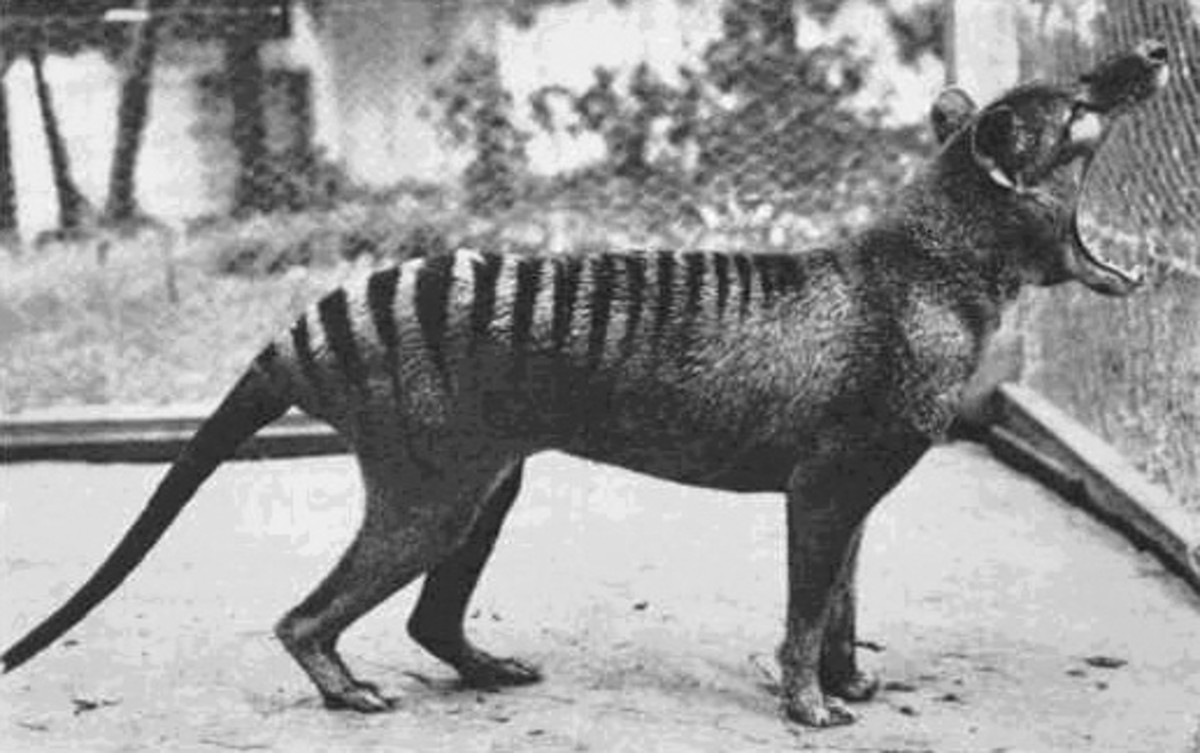The Day a Tiger Stalked the Woods of New Jersey
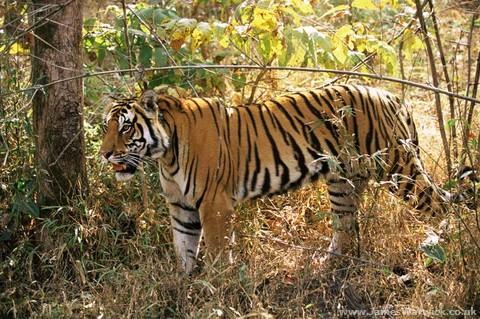
On the evening of January 27, 1999, commuters on their way home from work in the Central New Jersey area found themselves both puzzled and alarmed by a report on their radios. There had been multiple sightings of a large tiger roaming through Jackson Township, a large and sparsely populated community bordering Interstate 195 in rural Ocean County. Though it would have been easy to write such sightings off as ludicrous under normal circumstances, the authorities were not treating it as a joke. Residents were being warned to stay indoors and report any sightings of the big cat immediately. The hunt for the tiger would consume the better part of the afternoon and evening, and viewers of the local news would soon discover that it was not a hoax or a misidentification, as an FBI helicopter equipped with a thermal camera soon broadcast images of a genuine, 430-pound Siberian tiger in a part of the world about as far away from its natural habitat as it could get. After a search lasting over six hours, police were finally forced to shoot and kill the tiger after it had shrugged off multiple tranquilizer darts. That’s when the real mystery of its origins began to unfold.
Suspicion immediately fell upon the Six Flags Great Adventure theme park, located at the northern end of the township. The park housed a safari which, at the time, was home to fifteen individual tigers. However, investigators found that all of the park’s tigers were present and accounted for. After some searching, evidence pointed to Joan Byron-Marasek, a local resident and owner of the Tigers Only Preservation Society, an 13-acre property set back in an isolated area of the township. Byron-Marasek’s permit stated that she owned and housed almost two dozen tigers on her property. However, when police arrived on the scene, they were only able to locate seventeen. Further investigation deemed that conditions at the Preservation Society were unacceptable for the tigers, setting off a four-year court battle between Byron-Marasek and the state of New Jersey which culminated in the removal of the tigers from the property.
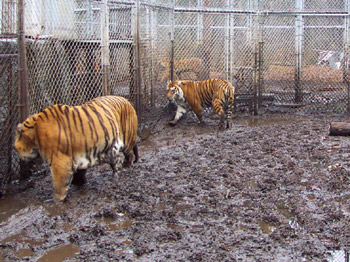
Background
Before the mid-1990s and the rise of telecommuting, Jackson Township was a largely rural area that was emblematic of the New Jersey Pinelands, and a sharp rebuke to the popular stereotype of New Jersey as an overdeveloped and industrial part of the United States. With a population of under 20,000 residents spread out over 100 square miles of largely undeveloped heavy forested land, the municipality provided an ideal climate for former circus animal handler Joan Byron-Marasek, who opened the Tigers Only Preservation Society on a large property off of a remote county road in 1976. She and her husband Jan moved to the property with five Siberian tigers they had obtained from an animal trainer from Ringling Brothers. Shortly afterwards, she was sent six more. Another six were born in captivity on her preserve, bringing her total to seventeen. Over the years, several died, several more were born, and several more were purchased. By 1999, Byron-Marasek’s permit listed twenty-three tigers as being housed on her property.
Over the course of two decades, however, a great deal of changes had taken place in Jackson Township. Developers had begun to take notice of the community’s proximity to many of New Jersey’s major highways and public transportation, and had begun to buy up large tracts of land to build enormous homes and subdevelopments to sell to North Jersey and New York City residents being squeezed out by high property values in and around the city. Between 1970 and 1999, the population of Jackson Township had doubled, and the area around the Tigers Only Preservation Society was not so isolated anymore. Police had received several complaints about the jungle music that Byron-Marasek would play late into the night over the large loudspeakers she kept on her property, as well as the roaring of tigers and the very strong odor of the compound in the summer months. Though they had given a formal warning to Byron-Marasek that her preserve would be kept under close observation for compliance with township ordinances, the time and expense involved eventually resulted in the warning amounting to nothing.
If you’re wondering how a private citizen can legally keep a pride of twenty-three tigers on a property in a residential neighborhood, it is not nearly as difficult as you might think. Only eight states prohibit the ownership of exotic animals, while three states have no restrictions at all. In most states, you simply have to register your ownership of the animals with the appropriate agency and agree to submit to inspections of the habitats in which they are kept in order to own them. New Jersey is one such state, and its restrictions only came about in the early 1970s. Dangerous exotic animals such as tigers are permitted if their owners demonstrate that they are planning to use them for educational or theatrical purposes. “Demonstrating” in Byron-Marasek’s case evidently was taken to mean “filling out the paperwork saying so”, however, as there was no evidence that her animals were ever used for such a purpose in all of the years that she owned them.
It is also not difficult at all to obtain a tiger on the open market. They breed extremely frequently in captivity, and many zoos and other exhibition houses, finding that baby tigers draw more visitors than older adult cats, dispose of their older “surplus” tigers through exotic animal dealers. The glut of tigers on the market has made their cost very affordable; a quick Google search shows that you can buy an adult tiger for around $2,000. As such, there are over 6,000 tigers kept as pets in the United States alone, more than three times the number of registered Irish Setters.
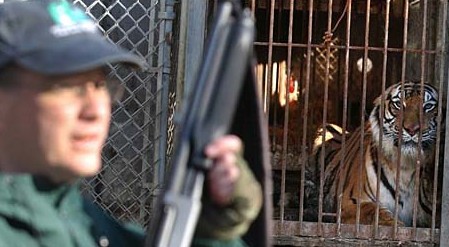
The Tiger is Spotted
It was at 1:40PM on January 27 when a resident of Wright DeBow Road, a development built up in the early 1990s, called the police and reported seeing a large tiger in her backyard. Officers were skeptical at first, but when they came to the property, they discovered large paw prints consistent with those of a big cat. Over the course of the afternoon, several more calls were fielded reporting sightings, and it soon became clear that there was a potentially serious situation developing. State and federal resources were brought onto the case as night fell, and an FBI helicopter equipped with a thermal tracking camera located the tiger in the vicinity of Goetz Middle School, about a mile south of I-195. Animal control experts attempted to subdue the tiger several times with tranquilizer darts, but they were apparently not enough to affect the nine foot-long, 430-pound Siberian tiger. At 9:35PM, after a six hour hunt, the decision was made to shoot and kill the animal.
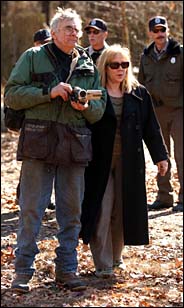
Aftermath
The incident became a media sensation from New York down to Philadelphia and all points in between. A tiger on the loose in the woods of New Jersey was the sort of thing that simply didn’t happen. The mystery surrounding the origins of the tiger, however, would become an even bigger story. Six Flags Great Adventure demonstrated that all of its tigers were accounted for, which led suspicion to fall on Joan Byron-Marasek and the Tigers Only Preservation Society. Investigators found the conditions at the compound to be (in their words) slipshod and dilapidated, with cages covered by deteriorating plywood, stockade fencing, and tarps, and the border fence around the property being down in multiple locations. Byron-Marasek could also only account for 17 out of the 23 tigers listed on her permit, although she claims several had died over the years. She insisted that none of her tigers were missing, and DNA tests run on the tiger shot could not conclusively link it to any of the tigers in the compound. On the face of the condition of the preserve, Byron-Marasek’s failure to show theatrical or educational grounds for possessing potentially dangerous wildlife, and grievously flawed record keeping, however, the state revoked Byron-Marasek's permit and ordered her to prepare her tigers for removal from the property.
Joan Byron-Marasek appealed the order in court, and the state agreed to let her keep the tigers while her appeal was in progress, as long as she kept them from breeding. Over the course of the next two years, however, three of her tigers had babies, which she hid from state inspectors for several months. After several more years of court battles, state officials shut down the Tigers Only Preservation Society in November of 2003, transferred Byron-Marasek’s twenty-four tigers to an animal sanctuary in Texas, and ordered Byron-Marasek to pay the $144,000 cost of relocation. The tigers are now reportedly thriving at their new home at the Wild Animal Orphanage in San Antonio, Texas.





